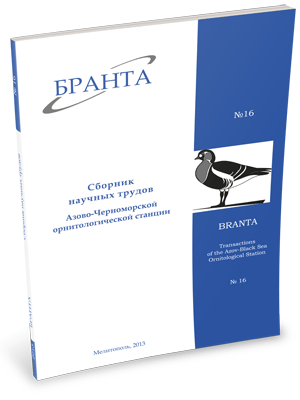
Transactions
of the Azov-Black Sea Ornithological Station



Winter aspect of foraging of the Long-eared Owl (Asio otus L.) in Kamianets-Podilskyi and the role of chiroptera in its diet
M. B. Drebet
In the Dniester area of Kamianets-Podilskyi Region the bats make up near 1% of the owls’ diet. Over the last years the Common Noctule is recorded on wintering in Ukraine more frequently, including the study area. For this study, pellets were collected in 2011-2013. They characterize a winter aspect of the owls’ foraging. The Long-eared Owl manifests its diet plasticity mainly by switching to the most available prey. The winter diet is characterized by increase of percentage of mice (Muridae) because representatives of this family are more active in winter season, though, generally the voles (Arvicolidae; Microtus) predominate almost in all the cases. The Common Noctule plays an important role in the diet of the Long-eared Owl within the study area due to situational switching of the owls to more available prey, i.e. due such kind of adaptability as feeding on usually occasional prey in a period of high activity of the bats.
Read the paper in a PDF file